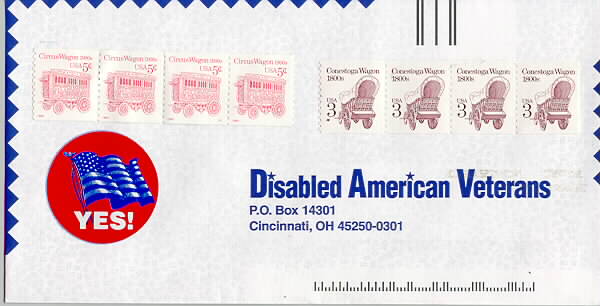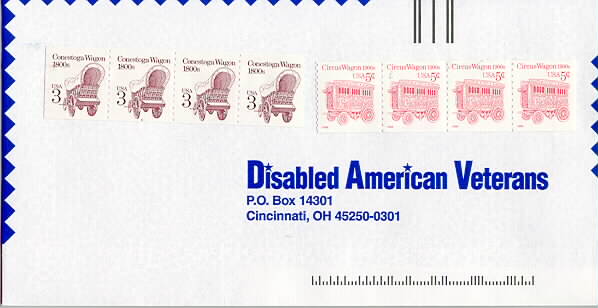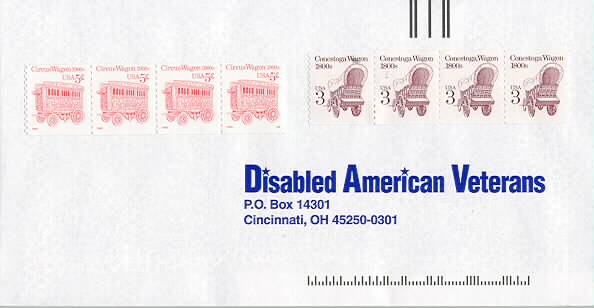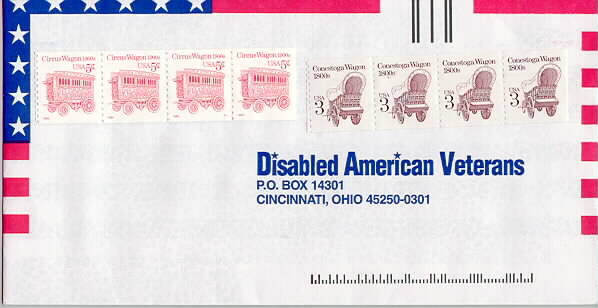| Disabled American Veterans (DAV)
32¢ Franking
Following are examples of DAV covers franked with
thirty-two cents postage. The 32¢ rate period began on January
1, 1995 and ended January 9, 1999.
From its continuing use of four 5¢ plus four 3¢ stamps, we
can assume DAV had found this the most effective franking during the 32¢
rate period.
All stamps on these covers are untagged and all have four gravure printed
5¢ Circus Wagon stamps (Krause-Minkus 1077, Scott 2452D) and four
intaglio printed 3¢ Conestoga Wagons (Scott 2252a, Krause-Minkus 883zx).
The Conestoga Wagons are all on the newer whiter paper.
These examples are from what could be called the late period of the
32¢ rate usage. Design and placement changes have been made
to conform to new postal regulations. All have bar codes preprinted
over white paper rather than the simulated texture of the rest of the envelope.
All also have Facing Identification Marks (FIMs)
preprinted on the upper right of the envelopes. To receive the Automation
Discounts offered for Standard Mail (formerly called Third Class) all outgoing
and enclosed return envelopes now must have these FIMs and preprinted bar
codes. For more information
on FIMs click here.
These covers no longer have the traditional blue or red diamond design
on all edges. The removal of some of these these edge designs is
necessary for postal equipment to accurately find and read the FIMs and
bar codes.
Precisely dating these covers is difficult as
the covers are "mint" examples and do not have any cancellations.
Some covers do have the date received noted by the recipient. From
the information available and the markings and return labels, I believe
these covers are presented chronologically. I would very much appreciate
any information/insights which could help more accurately date these covers. |




